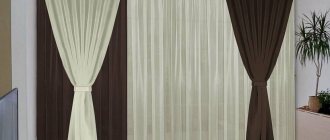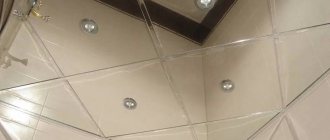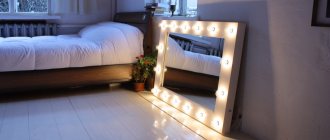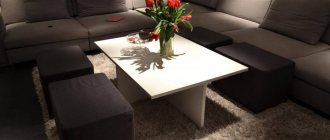Various modern materials are used for finishing the inside and outside of a residential building. One of the high-quality cladding options is the use of decorative stone tiles. This is a technological material that perfectly imitates natural texture. It is manufactured using high temperatures, so it later becomes a stable material with high strength characteristics.
Advantages of stone tiles
Stone tiles are a reliable and functional building material that emphasizes the beauty of the room. In addition, as designers note, stone design is considered a trend. Therefore, decorative tiles are in demand.
Natural stone is durable. In the interior, this material looks natural due to its natural origin. However, natural stone is not cheap, which is why it is usually found on the outside of buildings or in rich and sophisticated interiors.
So that people could use stone decoration in their home environment, an analogue of rock was invented - decorative stone tiles. It costs less than natural material, but does not lose to it in beauty and luxury.
In addition, stone tiles are versatile, durable and practical. It has many varieties that will transform any environment and add luxury and elegance to it.
Another advantage of stone tiles is that they do not absorb moisture, so they are easy to care for. This also includes the following advantages of this building material:
- It is durable, which means it will retain its original appearance for a long time.
- Easily tolerates high humidity.
- It has a clearly defined texture that hides external defects: scratches, cracks. Dust is also not visible on it.
- It is resistant to chemical attack, and therefore special products can be used when caring for stone tiles.
- The material is almost weightless. This allows the building material to be used for wall coverings.
- Health safety and environmental friendliness.
Advantages and disadvantages
Exterior stone has both advantages and disadvantages. The advantages of this material include:
- quick installation without prior professional training;
- light weight compared to cement tiles;
- Possibility of mounting on drywall;
- wide price range of product options;
- high degree of fire resistance;
- safety for human health;
- thermal conductivity;
- soundproofing;
- many variations of textures.
However, there are some nuances that can be considered as disadvantages of the finishing material. Compared to natural materials, tiles are less durable and resistant to physical abrasion. Some samples do not tolerate direct sunlight, chemical treatment and sudden temperature changes.
What are the disadvantages of decorative tiles?
Decorative stone tiles have the following disadvantages:
- Due to its relief and thickness, it is difficult to combine with other decorative elements. Because of this, it is necessary to select materials that have a similar structure.
- A wall finished with stone often does not match with some surfaces. Therefore, when decorating the interior, this must be taken into account.
- It belongs to cold building materials, which is why it is rarely used to cover residential premises. And if they do cover it, it’s paired with a warm floor.
- If it has a fine texture, then the material quickly becomes dirty, so it requires careful care.
- To cut it, you will need additional tools.
Colors
The color schemes of the tiles are varied and completely imitate the elements of nature. Moreover, the double technology of coloring the relief base leads to the fact that there are no two identical tiles. The color of the veins and protuberances will always vary. The choice of shade depends on the style and personal preferences of the designer, but still, when using this material, you should rely on the natural palette. It is customary to classify decorative tiles by color depending on the type of stone that is imitated. The following types are distinguished:
- marble imitation involves the use of white, black and beige with a slight splash of gray;
- malachite tiles should be dark green with some streaks;
- onyx will be presented in pink, amber and light green colors;
- gray and beige shades are suitable for decorative sandstone;
- artificial slate has a brown, gray-green tint with light veins;
- a mixture of stones involves the use of natural shades (brown, white, reddish, etc.).
Ceramics
It is used in almost all rooms, which is why it is extremely popular. The material is durable and resistant to temperature changes. It can serve for more than 50 years. Also, ceramics are inexpensive, but high quality. It is used to decorate paths, gazebos, and terraces.
This also includes tiled models, which are also ceramics. They can be embossed or smooth, and come in a wide range of colors and patterns. The tile imitates a wide variety of relief elements, ranging from unevenness to veins. In addition, there are tiled models on which a smooth transition of colors is visible.
Glue preparation
Created according to instructions in an old container. Tile and gypsum adhesive are suitable. It is important to achieve the formation of a mass with a dense consistency based on a thick paste.
But for each stage of laying decorative tiles, it is necessary to prepare a new portion of glue. It is designed to be used for 20 - 30 minutes, since later it will dry out and become unsuitable for installation.
Gypsum
Stone-look gypsum tiles are sensitive to temperature changes because they are made from gypsum mixed with polymers. But despite this, it is environmentally friendly and does not harm health.
Warm rooms are finished with gypsum tiles. Gypsum is also a natural building material that is easy to process.
Gypsum tiles are also quite thin, which means they can be perfectly combined with different coatings. In addition, the material is able to regulate the humidity in the room: when the room is dry, gypsum releases moisture and vice versa.
Note!
Floor tiles | Examples of using expensive and inexpensive floor tiles in interior design- Wood-look tiles: see here the most successful solutions for using wood-look tiles in different interiors
- Tile design - exclusive options and ideas | See the latest and most fashionable solutions here!
It is important to remember that gypsum tiles are sensitive to loads. Therefore, it is rarely used to cover the floor. This building material is most often used to decorate walls.
Laying
The entire process of laying artificial stone is divided into the following stages:
- First, the old coating is dismantled. If you plan to decorate the entire wall or ceiling, then the covering is removed completely. Otherwise, only part is removed.
- Then the walls are leveled, since the stone must be laid on a smooth surface. Cracks are puttied, and large differences and slopes are sanded.
- After sanding comes the priming stage. Before this, the surface should be cleaned of dust and other dirt. Only after this the area is treated with a primer (preferably acrylic).
- The tiles have uneven edges, so they need to be assembled like a puzzle on the floor using a meter. Identical fragments should be in contact with larger and smaller ones.
- Then you should prepare the glue (it should be thick and uniform without lumps) and proceed with the installation itself, paying special attention to the corner joints.
- After laying the tiles, you should wait from 3 to 10 days, depending on the type of adhesive and the characteristics of the room. Only after this period will the tile adhesive finally dry, and the structure itself will become durable.
Interesting design ideas
Decorative stone-look tiles come in a wide variety of sizes and shapes. Therefore, it will fit harmoniously into any home environment.
Interesting design proposals:
To create contrast in the interior, you can use stone tiles with an unusual texture.
Decorative tiles that imitate antiquity will look great in a classic interior. This style looks unusual, as if the stone is many years old and has lost its shape.
Tiles in the style of torn stone will add a highlight to your home decor. It consists of irregularly shaped natural rock plates. Another unusual solution is to use rubble - pieces of stone. This is a rather bold and original design solution.
Decorative tiles imitating wild stone will look good in a rustic or country style. It imitates natural rock, which will add additional luxury to the room.
Each design is special in its own way, which is why it is selected individually in each case. If the choice seems difficult and it is not clear what to choose, it is recommended to consult a professional designer. It will help you decide on the choice of stone-look tiles for interior decoration. Or he will select the necessary building materials for the facade. The designer will not only take into account the client’s wishes, but will also show and comment on photos of stone-look tiles, which will make the choice easier.
How to choose?
Artificial decorative stone for external and internal decoration is selected based on price, durability, reliability, ease of use and appearance. You should also pay close attention to the manufacturer of the product. If a company has long established itself in the market and has a large range of products, then its decorative tiles can be purchased. By law, tiles are not subject to mandatory certification, but the presence of such a document indicates that the company is attentive to its consumers and tests its products (if a large holding company buys a product from a small manufacturing company, it always requires technical documentation for testing). If the consultant refuses to provide quality certificates, you should think about the advisability of making a purchase.
When choosing a fake stone, you need to pay attention to its frost resistance indicators. The larger they are, the longer the material will last (this applies not only to the facade, but also to the internal cladding). Correct tiles have a textured surface that is indistinguishable from ordinary natural stone. When purchasing tiles, you need to look at their surface. If it is porous, then this indicates a violation of the production technology (for example, the casting mixture was moved). Such a stone will not last long; moisture will begin to enter the formed pores, which will lead to the destruction of the material. You should also pay attention to the thickness of the product. Depending on the purpose of the tile, it varies from 1 to 5 centimeters. Ideally, the thickness of the stone should be uniform along its entire length and width. In case of unevenness, such decorative tiles will be difficult to lay on a wall or floor; additional finishing work will be required to restore the defect (at least visually).
How not to make a mistake when choosing stone tiles
When choosing a stone-look tile yourself, you need to look at its properties and proceed from the room for which it will be used.
Stone-effect tiles for the bathroom and hallway should not allow moisture to pass through, and should be strong, durable and reliable. If you are choosing stone tiles for a room where the load on the floor will be large, it is recommended to give preference to natural or porcelain stoneware models.
It is important to know that plasterboard models are a decorative material. They are not used for flooring or wall finishing.
Creating a personal interior
One tile under a household stone can contain figures of different sizes and this makes it unique.
The coating looks heterogeneous, and the arrangement of the slabs and the pattern can be drawn up yourself or trusted to a master.
It is very easy to realize personal wishes or fantasies with this type of cladding.
What care is needed for stone tiles?
You need to start caring for stone tiles immediately after laying them. The coating should be cleaned and the seams sanded. There is no need to use sharp objects to remove difficult stains, otherwise there is a risk of scratching the tile and ruining its appearance.
In the future, you need to use special products to care for the tiles. They must be carefully selected for a specific type of coating. It is worth remembering that drywall should not be wet; it must be cleaned with a brush or vacuum cleaner.
Interesting solutions
A coating with a torn stone design is fascinating because the pattern is almost impossible to trace; obvious irregularities in the structure create the impression of lost integrity.
The solution is very original and interesting; it is used for interiors in which the appearance of the walls needs to be emphasized.
How to make stone tiles yourself
It is quite possible to make stone-look tiles with your own hands, but this process is labor-intensive and time-consuming.
To make the material, you will have to purchase special kits, watch video tutorials and, following the instructions, begin the process of creating stone tiles.
Decorative stone is a bold and unusual solution for the interior. Stone-effect floor tiles look elegant and luxurious. And the wall-mounted version adds zest to the home environment.
How to care?
Caring for decorative tiles involves wiping off dust in a timely manner. To avoid problems with excess moisture, the cladding is treated with hydrophobic sprays. Thanks to this coating, the tiles can be easily washed in the future. But it is better to use a special cloth with microfiber rather than an ordinary one to process it. A spray bottle is also suitable for spraying flowers. Cleaning with a vacuum cleaner (preferably a washing one) will be effective. A static broom is recommended for some surfaces, but is only necessary for dry cleaning. A regular porous sponge is suitable for cleaning a kitchen apron. As detergents, it is better to choose special products for processing artificial stone. Sometimes they use fabric softener, but there is no need to overuse this method, since the surface of the tile may deteriorate. The frequency of cleaning decorative stone depends on the humidity of the room, as well as the presence of objects in the apartment (house, office) that collect dust.











